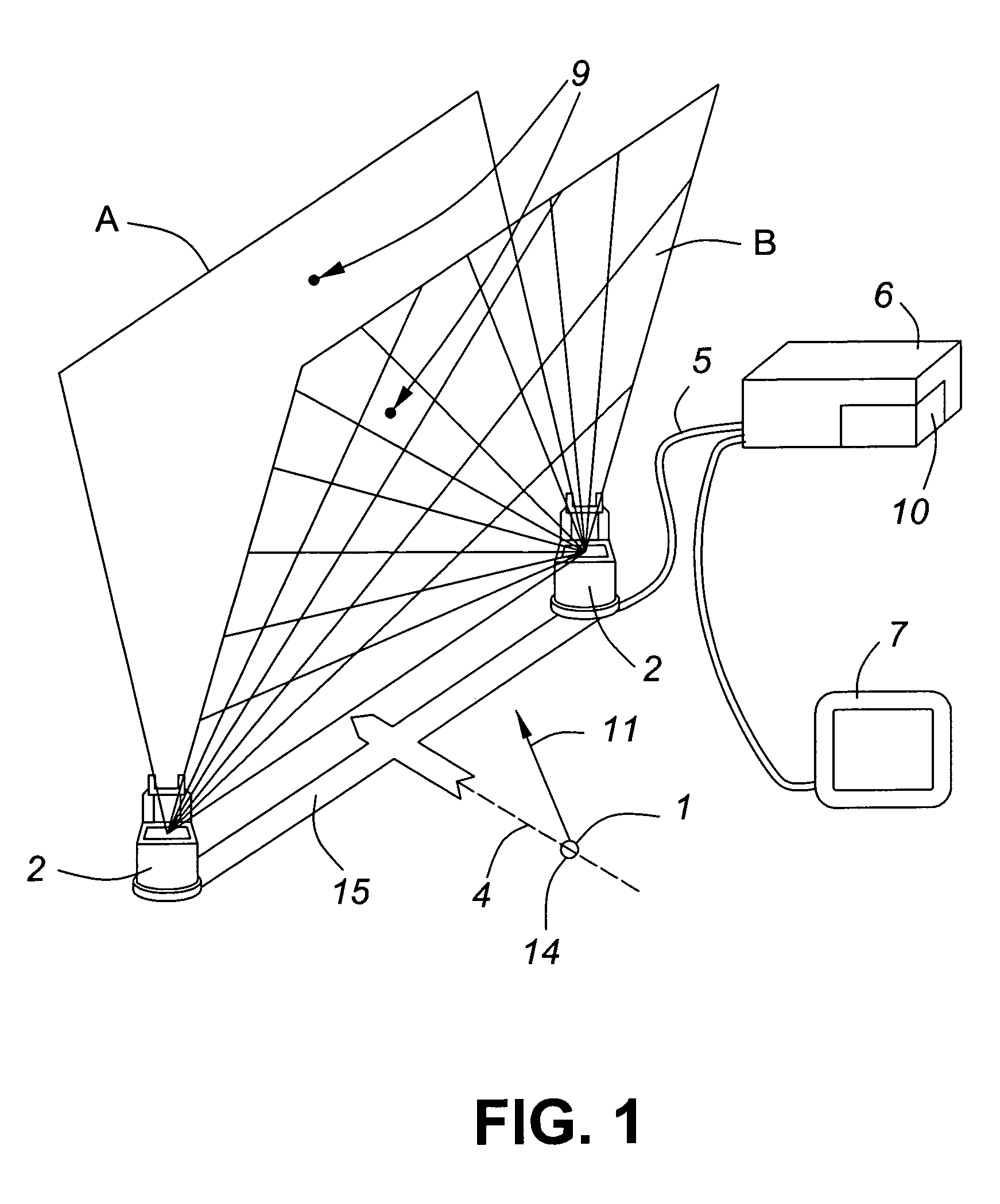Method and apparatus for locating the trajectory of an object in motion
a technology of motion trajectory and detection system, which is applied in the direction of sports equipment, instruments, and reradiation, can solve the problems of system not addressing the saturation effect of the sun, not addressing the exposure of arrays to ambient light, and unable to determine the velocity, nor the direction of threa
- Summary
- Abstract
- Description
- Claims
- Application Information
AI Technical Summary
Benefits of technology
Problems solved by technology
Method used
Image
Examples
Embodiment Construction
[0038]FIG. 1 illustrates the operation of the system as it tracks a golf ball 1. Two sensor pods 2, each containing two position sensor arrays 3 as shown in FIG. 2, are installed with one pod 2 on either side of the target line 4 at a known separation distance. The “target line 4” is the line over which the object to be sensed is expected to pass. The sensor pods 2 are connected electronically by a wire link 5 or a wireless link to the electronic processing unit 6. This unit sends signals to a display 7.
[0039]When the sensor pods 2 are aligned, the fields of view 8 as shown in FIG. 2 generated by each of the respective position sensor arrays 3 in one sensor pod 2 preferably overlap with the fields of view of a corresponding position sensor array 3 in the other sensor pod. This defines two common planar position sensor zones A and B. The sensor arrays 3 which combine to define a sensor zone constitute an associated set of sensor arrays, with one member of the set being present in eac...
PUM
 Login to View More
Login to View More Abstract
Description
Claims
Application Information
 Login to View More
Login to View More - R&D
- Intellectual Property
- Life Sciences
- Materials
- Tech Scout
- Unparalleled Data Quality
- Higher Quality Content
- 60% Fewer Hallucinations
Browse by: Latest US Patents, China's latest patents, Technical Efficacy Thesaurus, Application Domain, Technology Topic, Popular Technical Reports.
© 2025 PatSnap. All rights reserved.Legal|Privacy policy|Modern Slavery Act Transparency Statement|Sitemap|About US| Contact US: help@patsnap.com



